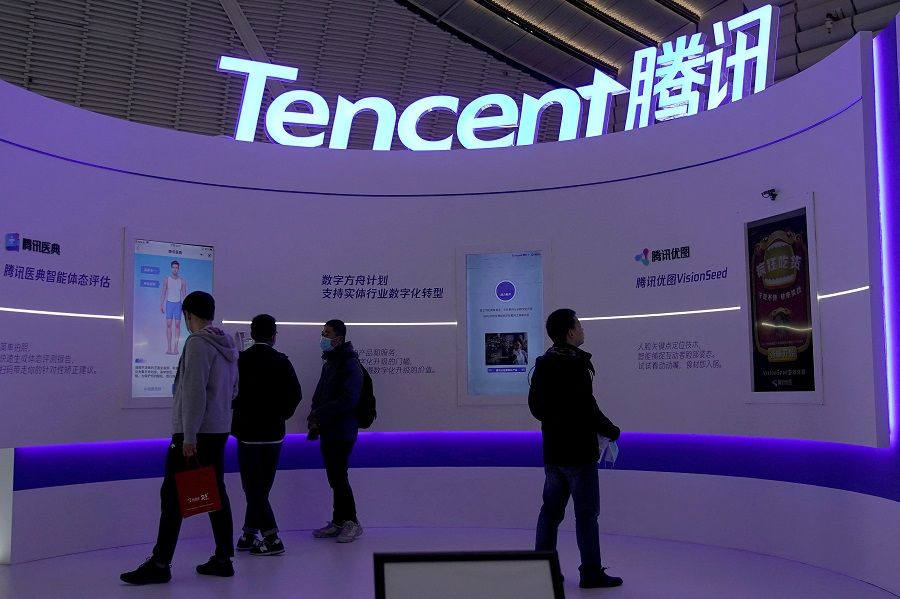Rebirth of China's tech companies possible through regulatory reforms

In November 2020, when Chinese regulators halted Ant Group's IPO at the last minute, few people realised that the investigations would kick off a series of regulatory measures affecting the whole internet industry, especially large digital platforms.
Over the past two years, antitrust investigations on "choose one out of two" practices, labour protection requirements of gig economy platforms, data security scrutiny of ride-hailing platforms, and new regulations on pervasive algorithms, have had wide-ranging effects on technology and business models.
Importantly, regulatory pressure has mainly been imposed on digital giants who had benefited most from the digitalisation of society, leaving a big question as to whether this is a doomsday or rebirth for these Chinese digital giants.
Then and now
To answer the question, we should first understand the sharp contrast between current rising regulatory pressures and the loose domestic regulatory environments of the past. A typical case dates back to 2015 when e-commerce giant Alibaba butted heads with the regulator, State Administration for Industry and Commerce (SAIC).
In early 2015, SAIC announced that it had found in a sampling inspection that 63% of the products sold on Alibaba's online Taobao marketplace were fake products. Taobao pushed back, questioning SAIC's sampling methods. SAIC responded by releasing a white paper demanding reforms from Taobao.
With its stock prices plunging, Alibaba insisted that such law enforcement was "emotionally charged" and said it would file a complaint. Even as SAIC and Jack Ma held a meeting, the white paper was taken down and the matter seemingly resolved.
While China created an antitrust enforcement agency in 2008, enforcement has been rather limited.

Similar cases can be seen in the field of antitrust investigations. While China created an antitrust enforcement agency in 2008, enforcement has been rather limited.
For example, most of the major equity investments or mergers between the largest internet companies in vertical industries were approved around 2015, including mergers between ride-hailing apps Didi and Kuaidi (later rebranded as Didi Chuxing), classified advertisers 58.com and Ganji.com, online-to-offline service providers Meituan and Dianping, Alibaba and video platform Youku Tudou, as well as ride-hailing apps Didi Chuxing and Uber China, etc.
Similar mergers also happened under Western regulatory environments like the purchase of Waze by Google, and WhatsApp by Facebook. However, the two cases had been carefully scrutinised by both US and EU regulators before and after the mergers, unlike the cases in China.
Alibaba and Tencent were more inclined to expand horizontally to cover different industries while Google and Apple mainly chose vertical integration along the layered structure of the internet to include operation systems, app stores and some universal apps.
A need to revamp the 'platform business group' model
Given the different regulatory environments, scholars have suggested that China had grown an alternative business model in the internet industry compared with the Silicon Valley model.
Coauthoring with Martin Kenney, I framed the concept of "platform business group (PBG)" to characterise the special growth model of Chinese digital platforms which relied on equity investments and the spin-off strategy, both of which were rarely seen in the Western market.
As a result, Alibaba and Tencent were more inclined to expand horizontally to cover different industries while Google and Apple mainly chose vertical integration along the layered structure of the internet to include operation systems, app stores and some universal apps.
Despite the different growth paths of US and Chinese digital platforms, both of them became challenged by regulatory pressures as they grew larger and more unwieldy. As I explain elsewhere, after having it good for more than 20 years, these "internet intermediaries" who were offered immunity and "safe harbour" protection from liability saw a turning point.
In the US, characterised by the appointment of Lina Khan as the chairwoman of the Federal Trade Commission (FTC) and Tim Wu to the National Economic Council, a so-called New Brandeis movement has signalled a changing antitrust culture against digital giants which would probably lead to the modification of their business model.
In China, given the special characteristics of the PBG model, the regulations imposed have been somewhat different from that in the US or the EU.
One current policy is to redefine the boundaries to ensure that digital platforms are put under regulations in each vertical industry.

For example, since China had not established comprehensive regulation systems in vertical industries before, there were loopholes that the digital platforms could exploit, such as leveraging the user base and data to step into related industries. Ant Group is a typical case in which the company used its transaction data to expand its offerings to insurance and loans without being heavily regulated as financial institutions would.
One current policy is to redefine the boundaries to ensure that digital platforms are put under regulations in each vertical industry. As a result, the PBG model which once relied on equity investments and the spin-off strategy to expand horizontally will be constrained. But this does not necessarily mean it would be doomsday for Chinese digital giants, but rather a possible rebirth of their growth model. Three observations can be made.
Potential for overseas growth and global competition
Firstly, the regulatory change should be considered as a new normal rather than a temporary political campaign, especially when the governance rules on data and algorithms have been gradually established, laying the foundations for other regulatory investigations.
One of the biggest challenges for the regulation of the internet industry is that the regulatory system always lags behind the development of technology and business models. For example, in antitrust investigations against digital platforms, it is difficult for regulators to prove whether their algorithms impede competition or not. Therefore, the current reforms, especially pertaining to basic rules concerning data and algorithms, would largely make up for the shortcomings and improve the efficiency of other regulatory investigations.
...the motivation of Chinese digital platforms to go abroad might become greater as the domestic market is not as profitable as before because of rising regulatory pressures.

Secondly, we would probably see more Chinese digital platforms going abroad in the near future. It may seem odd to argue that more Chinese digital platforms would go international at a time when the globalisation process is hindered. However, despite the resistance, the motivation of Chinese digital platforms to go abroad might become greater as the domestic market is not as profitable as before because of rising regulatory pressures.
Additionally, as they do so, the PBG model that once characterised Chinese digital platforms would have to be modified as it would not be feasible to export the model directly to global markets. For example, within China, WeChat would include online retailer JD's service in the super app instead of Taobao doing so, because Tencent has a strategic cooperation with JD that forms a business group relationship. Such a "cross-feeding or self-referencing strategy" among group members would probably be banned outside of China.
But this does not necessarily mean that Chinese digital giants would have to follow the Silicon Valley model inevitably. Some new growth models would emerge as we saw in cases like Tiktok or the new global expansion of Pingduoduo.
On the one hand, it would reduce the legal uncertainty of oversea markets, paving the way for the globalisation of Chinese digital platforms, while on the other hand, it would also help open the domestic market to global competitors.
Thirdly, the Chinese digital giants might be challenged by both domestic and global competitors. It was largely considered that Chinese digital giants were protected from global competition because of the relatively closed market. However, the current regulatory reform might also mean the Chinese digital market would be more open than before.
Compared with the former era when there were few governing rules on data or algorithms, the establishment of domestic rules lay the foundation for China to negotiate with other countries and reach a consensus on specific governance issues like transborder data flow.
On the one hand, it would reduce the legal uncertainty of oversea markets, paving the way for the globalisation of Chinese digital platforms, while on the other hand, it would also help open the domestic market to global competitors. The future is still dynamic but the change has already begun.
Related: Public awareness, perception and digital divide: Addressing the effectiveness of provisions on algorithm-generated recommendations in China | Tencent struggles to grow amid crackdowns and competition | No funding, no market. What now for China's tech companies? | China's burgeoning e-commerce cyberspace and its ever more complex regulations | Why platform companies seek monopoly and what happens when governments rein them in
